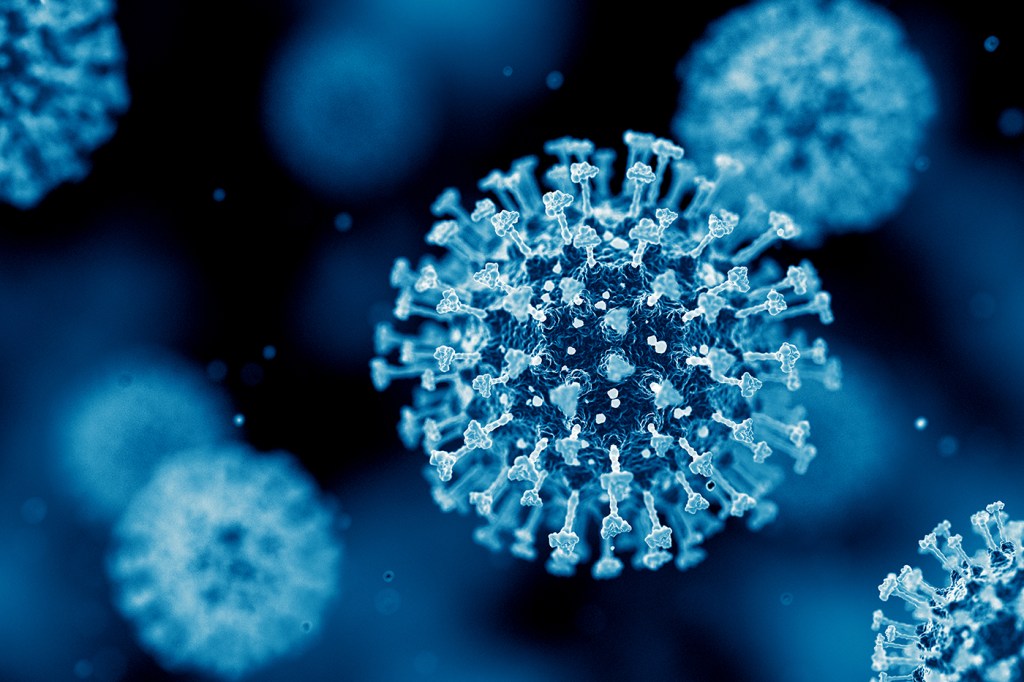Is the updated COVID vaccine a good match for the current variant and the emerging strain?

Northeastern University professors of pharmacy say the updated COVID-19 vaccines available for fall and winter of 2024 are a good match for the dominant strain of SARS-CoV-2 currently in circulation.
The mRNA vaccines from Moderna and Pfizer are not a 100% match since they’re based on the KP.2 strain that was spreading in early spring, says Mansoor Amiji, university distinguished professor of pharmaceutical sciences and chemical engineering.
The current dominant strain is KP.3.1.1, which the Centers for Disease Control and Prevention says accounted for 57% of U.S. cases of COVID as of Oct. 26.
“My understanding of these variants is that the KP strains are very similar to each other,” descending as they do from the Omicron family, Amiji says.
A newly emerging variant called XEC is also a member of the Omicron family but is a little bit more of a wild card with its rapid emergence on the COVID scene, going from 5% of total U.S. cases at the end of September to 17% one month later.
“It’s not clear if XEC will become dominant,” Amiji says. “It’s a very new variant and we don’t know a lot about how different it is from KP (strains).”
“It seems like XEC has a couple of mutations to the spike protein that make it a little bit more transmissible, so it’s probably going to eventually surpass KP3.1.1,” says Brandon Dionne, clinical professor in pharmacy and health systems science.

Hospitalizations have increased slightly
In other countries where XEC has taken hold, hospitalizations have increased slightly, but not to the same extent as when the Delta variant was prevalent, Dionne says.
Scientists say XEC is a recombinant variant, meaning that “it takes bits and pieces from other strains that have already been in circulation to form a new strain,” Amiji says.
“It is not a completely new strain,” he says. “What XEC is is basically an amalgam of (previous mutations). It is based on already existing strains in a different configuration analogous to the earlier Deltacron variant, which was a strain that had both Delta and Omicron mutations.”
“In a sense, it’s not something that we haven’t seen before,” Amiji says. “That’s another reason why there is not that much alarm around XEC.”
If XEC becomes the dominant strain, “there could be a reduction in the effectiveness” of the updated COVID vaccine, Dionne says. But he says it should still “be a pretty good match.”
What are the latest COVID symptoms?
Symptoms of COVID in healthy individuals continue to include sore throat, fevers, chills, fever, fatigue that persists for a few days and a cough that may last three to five days, Amiji says.
“We don’t see as many cases of those who have lost their sense of smell or taste as we used to,” he says.
The CDC recommends that everybody ages 6 months and up get an updated COVID-19 vaccine to prevent the risk of severe disease, hospitalization and death.
Autumn is a good time to get vaccinated to protect oneself during seasonal gatherings and from the increased risk of viral transmission during cold weather, Amiji says.
It takes two to three days after inoculation for the mRNA vaccines to kick into gear and start producing antibodies, he says.
As of Oct. 23, the federal health agency also recommended that people age 65 and older or who are immunocompromised get a second dose after six months to prevent severe disease.
Featured Posts
Antibodies shorten duration of symptoms
The idea is to make sure people have enough circulating antibodies to shorten the duration of symptoms, especially in older people and others more prone to severe disease, Dionne says, adding that immunity from COVID vaccines wanes with time.
In addition to the mRNA vaccines, Novavax offers a protein-based COVID vaccine based on the JN.1 variant, the parent strain from which KP.2 and other currently circulating variants stem.
It takes two to three days after inoculation for the mRNA vaccines to kick into gear and start producing antibodies, Amiji says. The most effective protection from mRNA and Novavax COVID vaccination occurs after a week or two, Dionne says.
Amiji says people can get the COVID and flu vaccines at the same time, in separate arms.
Mask wearing, especially in crowded public places, can also help prevent the transmission of viral infections such as COVID and flu, he says.
But he says vaccination is the first line of defense.
“Keep in mind that if you are in an environment where you’re getting a high density of viral exposure, even if you are protected, you may get infected,” Amiji says.
But, he says, “We have seen again and again that those who are vaccinated get milder infections.”











